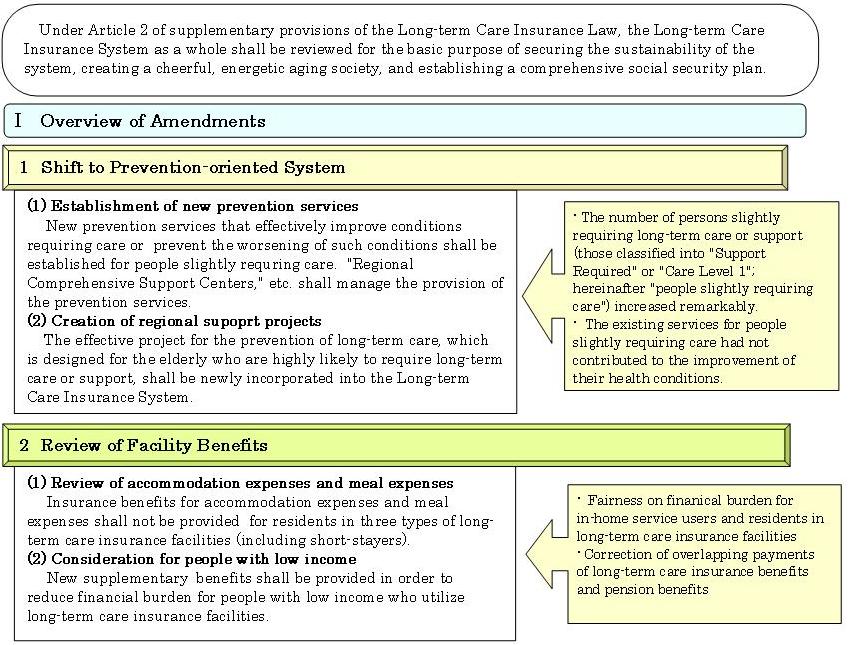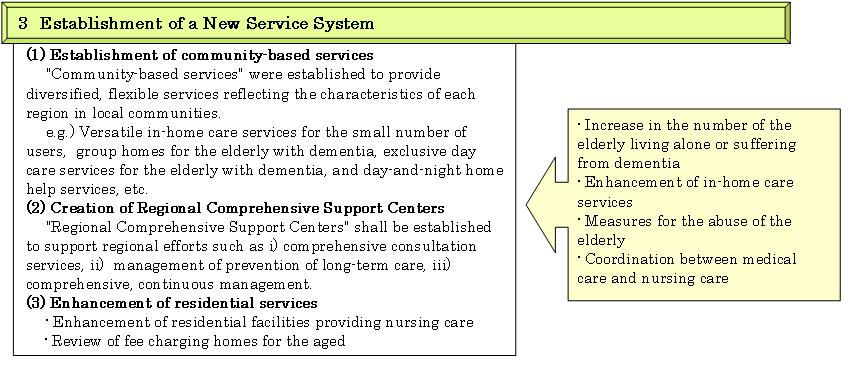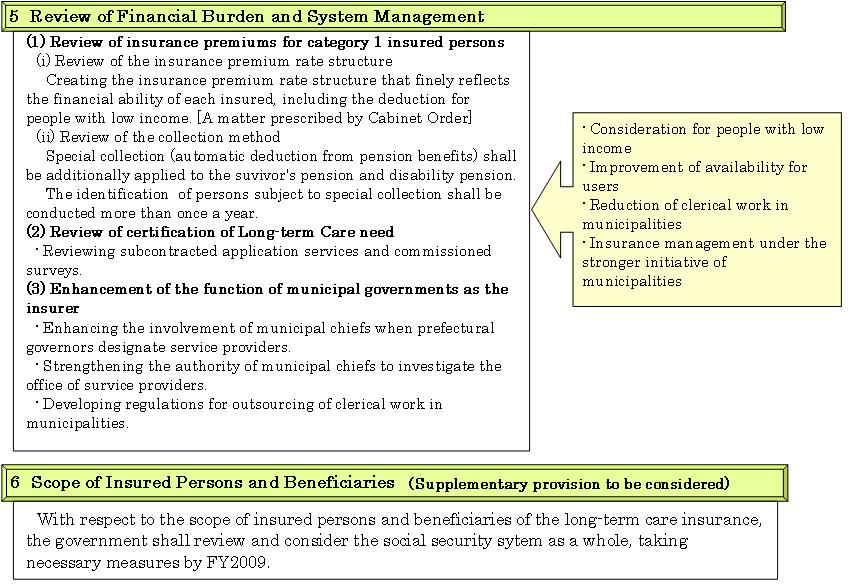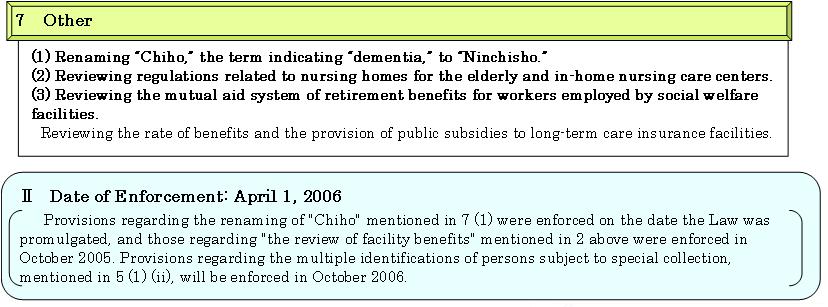 Back
Back  Next
Next- The environment that supports proactive efforts made by the public to stay healthy has been developed through the promotion of the "21st Century National Health Plan" that sets goals to be achieved by FY2010.
- The "Bill for Partial Amendment to the Long-Term Care Insurance Law, etc." was submitted to the 162nd Diet in February 2005. The bill included a wide range of measures, such as a shift of the existing nursing care system to a prevention-oriented system, review of accommodation expenses and meal expenses paid by nursing home residents, establishment of a new service system, and improvement of service quality.
Chart 2-3-16 The Bill for Partial Amendment to the Long-Term Care Insurance Law, etc. (Overview)





- In order to provide the public with information on how to select and utilize welfare equipment, a new search system that provides users and care managers with necessary information on an internet database has been adopted since April 2004. The information maintained in the database includes examples of utilization of welfare equipment and house refurbishment, how to choose wheelchairs or special beds, and product information such as the measurements and functions of welfare equipment that is covered by the Long-term Care Insurance System.
- In order to improve the quality of care managers playing a major role in the Long-term Care Insurance System, internship programs and training programs for existing staff have been steadily conducted. Additionally, in order to improve the function of local care management, a wide range of measures for supporting care managers have been taken, such as the development of the consultation service system, and the fostering of care management leaders who provide care managers with instructions and advice and contact related organizations.
- An expert committee was established, and, as a result of examination in the committee, "Chiho," the term used generally or publicly to indicate "dementia," was renamed "Ninchisho."
- The support project for the establishment of outside evaluation organizations for group homes was conducted to ensure that all municipalities would start evaluating services provided by group homes for the elderly with dementia in or after FY2005. Additionally, in order to further improve service quality, training programs have been conducted for people who intend to open new group homes.
- Aiming for the stable management of the Medical Insurance System even at the peak of aging population and declining birthrate in the future, under the supplementary provision rule of the Law to Partially Amend the Health Insurance Law (Law No. 102, 2002), the Cabinet decided basic policy in March 2003 with respect to the reform of the Medical Insurance System including the reorganization and the merger of insures, the establishment of a new health care system for the elderly, and the reexamination of medical fee system. The basic policy set forth a plan to establish a new health care systems for the elderly aged 65 or older, which will be designed in view of different characteristics between the older elderly (75 or older) and the younger elderly (65-74), taking into consideration such matters as the consistency with ages when pensions start to be paid and ages when the Long-term Care Insurance System is adopted, the higher medical expenditure per person aged 65 or older, and the uneven distributions of the elderly between the National Health Insurance and Employees' Health Insurances.
In light of the basic policy, the Medical Insurance Subcommittee of Social Security Council has been examining various issues including the establishment of a new medical health system for the elderly.
- In order to comprehensively promote measures for supporting the development of the next generation, the following laws have come into effect: 1) "Law to Partially Amend the Child Allowance Law (Law No. 108, 2004)," which aims to extend the age when child allowances start to be paid from the age immediately before the beginning of compulsory education to the age when the child completes the third grade of elementary school; 2) "Law to Partially Amend the Child Welfare Law (Law No. 153, 2004)," which aims to enhance and strengthen measures for preventing child abuse such as the expansion of the child guidance system and review of judicial involvements; 3) "Law to Partially Amend the Law Concerning the Welfare of Workers Who Take Care of Children or Other Family Members Including Child Care and Family Care Leave, etc. (Law No. 160, 2004)", which aims to make the child and family care leave system more convenient and accessible through the expansion of the range of workers eligible for the system and extension of the valid period of child care leave.
- In June 2004, the "General Principles Concerning Measures for the Society with a Declining Birthrate" was endorsed by the Cabinet as a governmental basic policy. These principles focus on the next five years or so when the national population will start to decrease, aiming to enthusiastically promote governmental measures for improving the declining birthrate. At the end of December 2004, the "Detailed Plan for the Implementation of Important Measures under the General Principles Concerning Measures for the Society with a Declining Birthrate (Child-Care Support Plan)" was decided at the Declining Fertility Society Policy Council.
Top Page > Annual Report on the Aging Society > Annual Report:2005